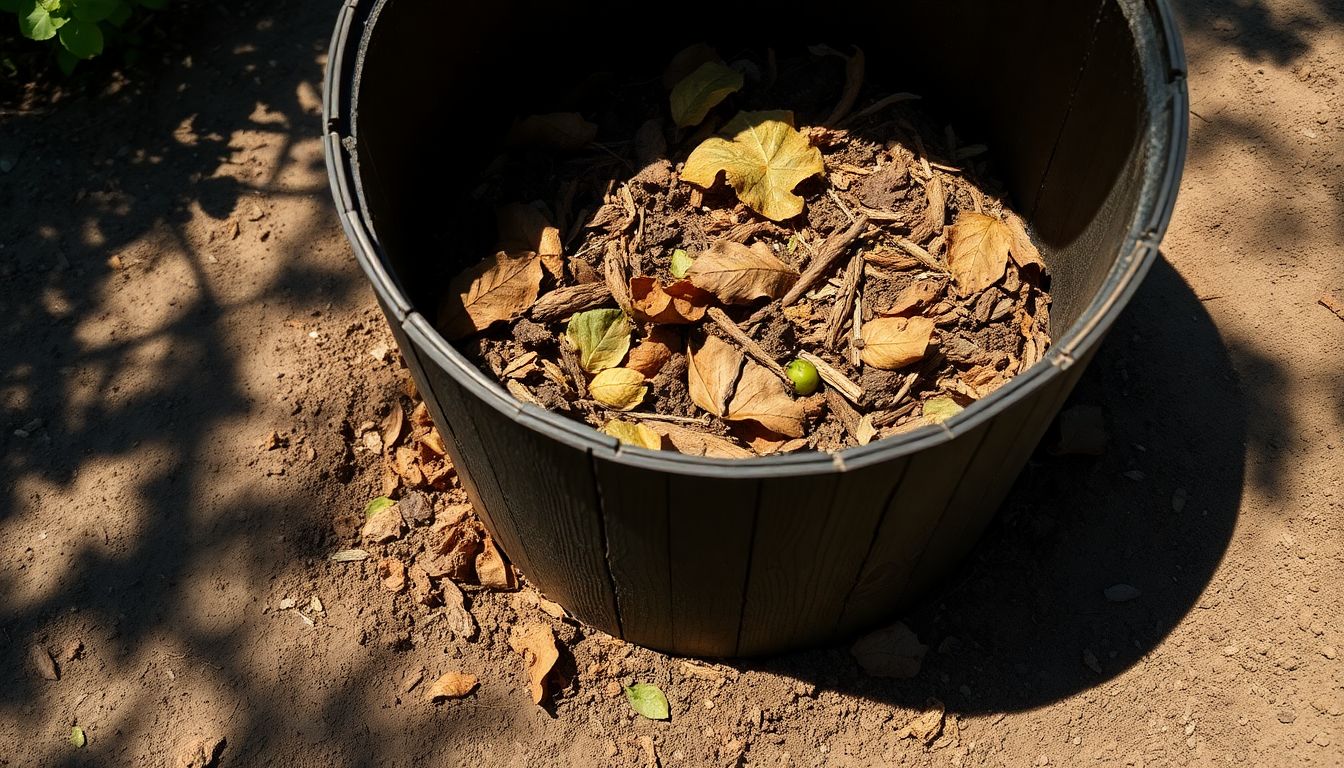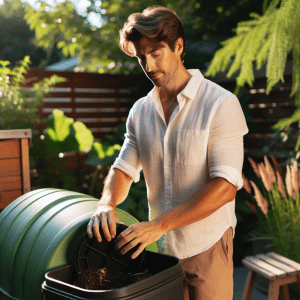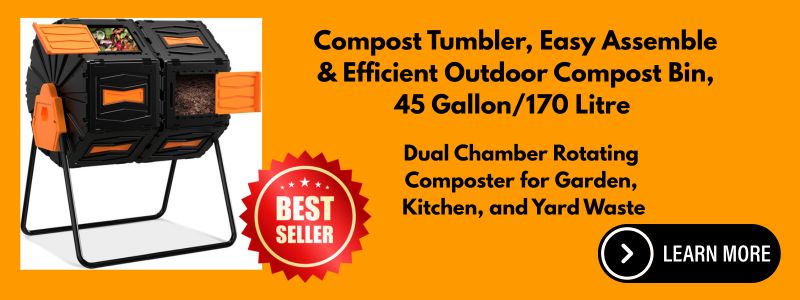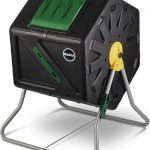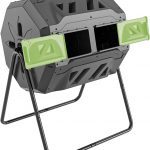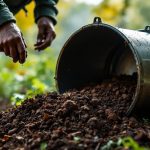How to Master Compost Tumblers: A Step-by-Step Guide
Tired of food scraps and yard waste overflowing your trash can? Do you want rich soil for your garden without the hard work of traditional composting?
Compost tumblers can be the solution! They offer faster composting, reduce labor, and control pests. This guide will show you how to use them correctly.
Understanding Compost Tumbler Basics
Compost tumblers provide an efficient way to turn waste into garden gold. Let’s explore what makes them special.
What is a Compost Tumbler?
A compost tumbler is a container designed to rotate easily. This rotation mixes the compost, speeding up the decomposition process.
You’ll find various types, like dual-chamber, single-chamber, stationary, and rotating models. Most are made from plastic or metal.
Benefits of Using a Compost Tumbler
Tumblers offer several advantages. They speed up decomposition, making compost faster than traditional methods. Turning is easier, as you simply rotate the drum.
Aeration is better because of the mixing action. They also keep rodents and pests out, and many find them more appealing than compost piles.
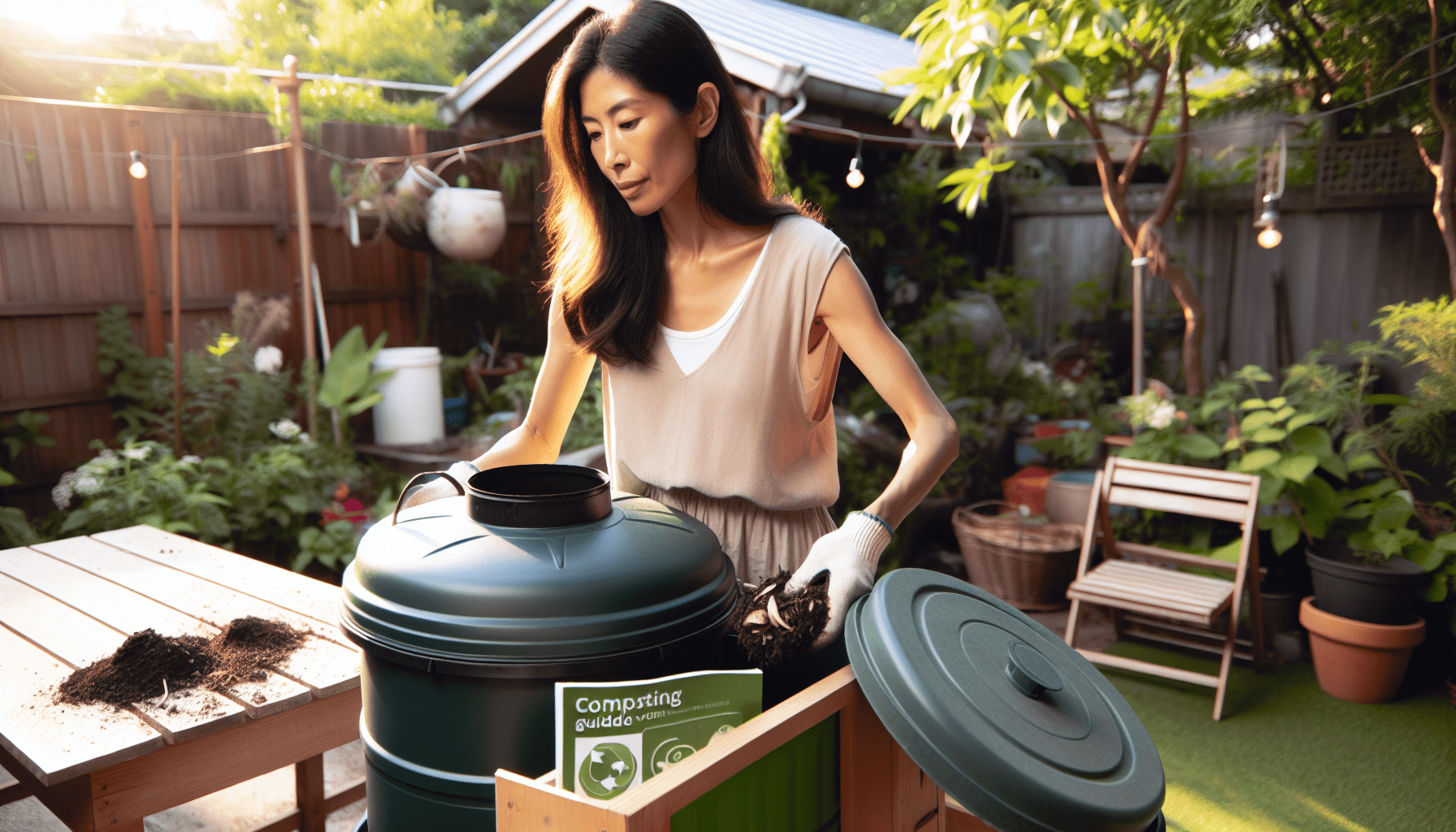
Compost Tumbler Limitations
Keep in mind, tumblers have some drawbacks. They have a limited capacity, so they may not work for large gardens. The initial cost can be higher than building a compost pile.
Compost can dry out quickly. They aren’t ideal for large amounts of yard waste.
Choosing the Right Compost Tumbler
Picking the right tumbler is key. Here’s what to think about.
Size and Capacity
First, think about how much compost you need. Next, think about how much space you have for the tumbler.
Then, think about how much waste you make.
A smaller tumbler is fine for a small household. A larger one is better for big gardens or families.
Material and Durability
The material impacts how long the tumbler lasts. Plastic tumblers are cheap, but they can break down in the sun. Metal tumblers are stronger, but they can rust.
Look for UV-resistant materials for plastic models. Good build quality means your tumbler will last for years.
Features to Look For
Consider aeration. Some tumblers have built-in vents. Drainage is also important. Ease of turning is something to think about. Do you want a single or dual-chamber model?
Check the warranty for peace of mind. Price is always a factor.
Setting Up Your Compost Tumbler
A correct setup ensures success. Let’s get started.
Location, Location, Location
Choose a good spot for your tumbler. Sunlight helps warm the compost. Make sure it’s easy to get to with a hose. The ground needs to be level for easy turning.
Initial Setup
If needed, put the tumbler together using the directions. Then, add a layer of coarse material. This could be twigs or wood chips. This helps with drainage.
The Art of Composting in a Tumbler: Step-by-Step
Now for the fun part! Here’s how to compost in a tumbler.
Gathering Your Materials: Greens and Browns
The carbon-to-nitrogen ratio is key to successful composting. “Greens” are nitrogen-rich materials, like kitchen scraps and grass clippings. “Browns” are carbon-rich, like dried leaves and shredded paper.
The ideal ratio is 2:1 or 3:1 browns to greens.
Keep a bin for browns near your tumbler. You can store dried leaves or shredded paper there.
Loading the Tumbler
Layer greens and browns in the tumbler. Chop or shred materials first.
This speeds up decomposition. For example, you might use two buckets of leaves for every one bucket of kitchen scraps.
Turning and Aerating
Turning the tumbler regularly is vital. It aerates the compost and ensures even decomposition. Turn it every 2-3 days.
Try setting a schedule as a reminder.
Monitoring Moisture Levels
Check the moisture level regularly. The compost should be damp, not soggy. It should feel like a wrung-out sponge.
Add water if it’s too dry. Mix in more dry materials if it’s too wet.
Troubleshooting Common Composting Problems
Sometimes, things go wrong. Here’s how to fix them.
Smelly Compost
Smelly compost usually means there isn’t enough air. It can also happen if there’s too much nitrogen. Add more browns to balance it out.
Turn the tumbler more often to aerate the compost.
Slow Decomposition
Slow decomposition can result from the wrong carbon-to-nitrogen ratio. It could also be due to too little moisture or not enough air. Adjust the ratio. Add water. Turn the tumbler more often to fix these problems.
Pests and Animals
To keep pests out, ensure the lids are tight. Avoid adding meat and dairy products. These attract unwanted visitors.
Harvesting and Using Your Compost
All your hard work leads to this. It’s time to use your compost.
Knowing When It’s Ready
Finished compost is dark, smells earthy, and has a crumbly texture. You shouldn’t be able to recognize the original materials.
Harvesting Techniques
Take the finished compost out of the tumbler. You can use a shovel or pitchfork. Sift through it to remove any big pieces. A screen works well for this.
Using Your Compost
Use compost to enrich your garden soil. Mix it into the soil when planting. Spread it around plants as a top dressing.
You can even make compost tea by steeping compost in water.

Conclusion
Using a compost tumbler is simple. Gather your greens and browns, load the tumbler correctly, turn it regularly, and monitor moisture levels.
With a compost tumbler, you’ll enjoy faster composting, less labor, and pest control. Start composting today for a greener life and healthier garden!
Here are 10 entertaining and simple FAQs for you
- What’s a compost tumbler, and why should I care?
It’s like a lazy gardener’s pet rock—fill it with scraps, spin it, and watch it turn trash into black gold for your plants! - Do I just chuck everything in there like a garbage smoothie?
Not quite! Toss in a mix of “green” stuff (like veggie peels) and “brown” stuff (like dry leaves), but skip the meat and dairy unless you want a stinky disaster. - How often do I need to spin this thing?
Give it a twirl every few days—like a DJ spinning compost beats—to keep the party aerated and cooking. - Will my compost tumbler smell like a dumpster fire?
Only if you mess up the recipe! Balance the greens and browns, and it’ll smell more like earthy goodness than a garbage apocalypse. - How long until I get compost worthy of my roses?
Patience, grasshopper! It takes about 4-8 weeks of tumbling magic—faster than a pile, slower than a microwave. - Can I compost my pizza boxes in there?
Sure, if they’re grease-free and shredded! Otherwise, you’re just inviting greasy gremlins to the compost party. - What’s the weirdest thing I can compost?
Got old cotton socks or hair from your brush? Toss ‘em in! Your tumbler’s not picky—it’s the hippie of gardening tools. - Do I need to water my compost tumbler like a plant?
Yep, keep it damp like a wrung-out sponge. Too dry, and it naps; too wet, and it turns into swamp soup. - Can I screw this up and ruin everything?
Relax, it’s not rocket science! Avoid toxic stuff (like plastic or weed killer), and you’ll be fine—even if your tumbler looks like a science experiment gone wild. - When do I know my compost is ready to party with my plants?
When it’s dark, crumbly, and smells like forest floor vibes, it’s time to spread the love—your garden will thank you!

